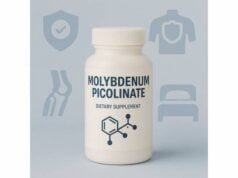
Myo-inositol is a vitamin-like carbohydrate that your body makes from glucose and also gets from foods like citrus, beans, and whole grains. Inside cells, it supports signaling pathways that help regulate insulin action, hormone balance, and how eggs mature in the ovaries. That is why myo-inositol shows up in conversations about polycystic ovary syndrome (PCOS), menstrual regularity, and gestational diabetes prevention. You will also see it paired with its stereoisomer D-chiro-inositol—often in a 40:1 ratio—to reflect the balance found in healthy tissues. Most people use it for practical outcomes: more predictable cycles, better ovulation quality, or gentler support for insulin resistance alongside diet, movement, and sleep. Evidence is strongest in specific groups (for example, people with PCOS or those at high risk for gestational diabetes), while findings for mood or general metabolic health are mixed. The good news: at typical doses, myo-inositol is well tolerated. This guide translates the science into realistic expectations, clear dosing, safer combinations, and common mistakes to avoid.
Key Insights
- Can support menstrual regularity, ovulation quality, and insulin sensitivity in some people with PCOS.
- May lower gestational diabetes risk in at-risk pregnancies when started early.
- Typical adult dose: 2–4 g/day myo-inositol, often split twice daily; some use a 40:1 myo- to D-chiro-inositol combo.
- Avoid high-dose D-chiro-inositol alone; use caution if pregnant, on glucose-lowering medication, or with kidney disease.
Table of Contents
- What is myo-inositol?
- Does myo-inositol help PCOS?
- Can it help during pregnancy?
- How to take it day to day
- Common mistakes and who should avoid
- What the research really shows
What is myo-inositol?
Myo-inositol is a ring-shaped carbohydrate (sometimes called a sugar alcohol) that plays two practical roles in human biology. First, it is a structural building block in cell membranes as phosphatidylinositol. Second, it serves as a signaling hub: enzymes attach phosphates to the ring or split it into messenger molecules that relay instructions for insulin, follicle-stimulating hormone (FSH), and other pathways. In other words, myo-inositol helps cells “hear” hormonal signals.
There are nine inositol stereoisomers. Myo-inositol is the most abundant in humans; D-chiro-inositol is another relevant form produced from myo-inositol by an enzyme that depends on insulin. Tissues maintain characteristic myo- to D-chiro-inositol ratios. The ovary is myo-inositol-dominant, which appears important for FSH signaling and oocyte (egg) maturation. The liver, muscle, and fat use more D-chiro-inositol to help translate insulin’s message into glucose management. This division of labor explains why combination products often mimic a physiological 40:1 ratio, keeping myo-inositol front and center while supplying a small, supportive amount of D-chiro-inositol.
Diet contributes several hundred milligrams to well over a gram per day, depending on food choices. Citrus fruits, beans, and whole grains are notable sources, but the body also manufactures myo-inositol from glucose, so outright deficiency is uncommon. Supplemental myo-inositol simply increases the pool available for membrane turnover and signaling, especially in tissues stressed by insulin resistance or hormonal imbalance.
From a practical standpoint, myo-inositol is tasteless to slightly sweet, dissolves in water, and is typically taken in 1–2 gram servings once or twice daily. It is considered well tolerated for most adults, including at higher research doses, though mild gastrointestinal upset can occur if you escalate quickly. Because it is not a stimulant and does not act like a drug that forces a short-term effect, benefits accrue gradually as signaling and tissue sensitivity improve over weeks.
Finally, myo-inositol is not a cure-all. It works best when it supports, rather than replaces, the foundations of metabolic and reproductive health: balanced meals with adequate protein and fiber, regular activity, restorative sleep, and targeted medical care when needed. Keeping that perspective helps you judge whether it is a useful addition for your goals.
Does myo-inositol help PCOS?
For PCOS, the two outcomes most people care about are cycle regularity with ovulation and a healthier metabolic profile (insulin sensitivity, lipids, and weight management). Myo-inositol addresses the first by supporting ovarian FSH signaling and the second by improving insulin signaling in insulin-resistant tissues. How does that translate in practice?
In clinical trials, many participants using myo-inositol—alone or in a formula with a small amount of D-chiro-inositol—experience more predictable cycles and improved ovulation markers over 8–12 weeks. Some studies also report modest reductions in total and free testosterone, improvements in sex hormone-binding globulin, and better fasting insulin or HOMA-IR. A number of trials compare myo-inositol with metformin. While metformin remains a first-line insulin sensitizer with robust evidence, myo-inositol is often non-inferior for menstrual outcomes and tends to be gentler on the gastrointestinal tract. In overweight individuals or those with clear insulin resistance, the signal for benefit is generally stronger.
That said, not every study is positive. Evidence quality varies, and heterogeneity in PCOS phenotypes, diagnostic criteria, and dosing regimens makes combined results harder to interpret. Some recent high-quality reviews conclude that inositol shows promise yet emphasize uncertainty in effect sizes and recommend shared decision-making rather than blanket endorsement. The balanced takeaway: myo-inositol is a reasonable option for PCOS, especially if you prefer a supplement approach or cannot tolerate metformin, with expectations set to “helpful adjunct,” not guaranteed solution.
Realistic timelines and targets help. By 8–12 weeks, many users can gauge whether cycles are shortening toward 28–35 days and whether luteal phase signs (for example, basal temperature shifts or luteinizing hormone patterns) suggest consistent ovulation. Metabolic changes usually require 12 or more weeks and work best alongside dietary fiber emphasis, protein at each meal, resistance training, and sleep regularity. If acne or hirsutism is a goal, allow several months for androgen-related changes to show up in skin and hair growth cycles.
One important nuance is formulation. A common regimen is myo-inositol 2 g twice daily, sometimes paired with D-chiro-inositol 50 mg twice daily (a 40:1 ratio). That ratio respects ovarian biology. High doses of D-chiro-inositol alone—far from the physiologic balance—have been linked with menstrual irregularities and theoretical concerns about oocyte quality. Unless your clinician recommends otherwise, keep D-chiro-inositol low and supportive.
When might myo-inositol be less helpful? If your cycles are already regular and there is no insulin resistance, benefits may be limited. If thyroid disease, hyperprolactinemia, hypothalamic amenorrhea, or premature ovarian insufficiency drive symptoms, targeted medical treatment is more appropriate. If fertility is an urgent goal, inositol can sit alongside ovulation induction or assisted reproduction under clinician supervision, but it is not a replacement for those therapies.
Bottom line: for many with PCOS, myo-inositol is a safe, practical adjunct that can improve cycle predictability and markers of insulin resistance over several months, with best results when aligned to the physiology of the ovary and combined with lifestyle fundamentals.
Can it help during pregnancy?
Gestational diabetes mellitus (GDM) develops when pregnancy hormones and preexisting insulin resistance outpace the pancreas’s ability to produce enough insulin. That matters because elevated glucose during pregnancy raises risks for preeclampsia, larger babies, operative delivery, and later metabolic disease for both mother and child. Preventing GDM—or at least reducing its severity—starts well before the oral glucose tolerance test. This is where myo-inositol has been studied as a proactive, low-burden addition for those at higher baseline risk.
Several randomized trials and meta-analyses suggest that starting myo-inositol early in pregnancy can reduce the incidence of GDM, especially in people with risk factors such as PCOS, prior GDM, a strong family history of type 2 diabetes, overweight or obesity, or advanced maternal age. Dosing in these studies commonly uses 2 g myo-inositol twice daily (total 4 g/day), often paired with folic acid, beginning in the late first trimester or earlier. Reported benefits include lower GDM rates and modest improvements in fasting and post-challenge glucose, with some analyses noting fewer complications like gestational hypertension or preterm birth. Importantly, adverse effects have been minimal in trials using these doses.
It is essential to put this in context. Myo-inositol is not a replacement for medical nutrition therapy, blood glucose monitoring when indicated, or insulin if prescribed. Think of it as part of a layered approach: nutrient-dense meals with fiber and protein at each sitting; daily walking and strength work scaled to your stage of pregnancy; adequate sleep; and close collaboration with your obstetric team. If you already meet criteria for GDM, ask your clinician whether continuing myo-inositol makes sense alongside standard care.
Practical tips for use in pregnancy center on consistency and tolerability. Splitting the dose (for example, 2 g with breakfast and 2 g with dinner) limits gastrointestinal upset. Because it dissolves easily, many prefer powder mixed into water, yogurt, or a smoothie. If nausea is prominent in the first trimester, start with 1 g twice daily and move up as tolerated.
Who should get extra caution? Anyone with chronic kidney disease should review supplements with a specialist. Those on glucose-lowering drugs may need to monitor more closely for lows, even though myo-inositol by itself does not usually cause hypoglycemia. If you have multiple high-risk factors or a history of GDM that required insulin, do not rely on supplements alone—get an early glucose screening plan in place.
After delivery, some people choose to continue myo-inositol during breastfeeding while focusing on sleep, gentle activity, and realistic nutrition. Discuss this with your healthcare team. The priority postpartum is establishing feeding, recovery, and mental health; any supplement must fit those goals without crowding out essentials like adequate calories and hydration.
In summary, for at-risk pregnancies, myo-inositol at 4 g/day started early can be a sensible addition to standard prevention strategies, with a favorable tolerability profile and supportive—but not definitive—evidence for reducing GDM.
How to take it day to day
A clear, simple plan makes it easier to judge whether myo-inositol is working for you. Use the steps below to select a dose, choose a formulation, and set expectations.
1) Pick a starting dose and schedule.
- General wellness or mild cycle irregularity: begin with 1 g twice daily.
- PCOS, anovulation, or clear insulin resistance: 2 g twice daily (total 4 g/day) is the most common regimen.
- High-risk pregnancy prevention (with clinician approval): 2 g twice daily from early pregnancy.
Split doses with meals to improve comfort. If you are sensitive to supplements, ramp up over 1–2 weeks.
2) Choose the right form.
- Powder mixes easily into water or yogurt and allows flexible dosing.
- Capsules offer convenience if you travel, though more capsules are required at higher doses.
- Combination formulas pair myo-inositol with a small amount of D-chiro-inositol. If you choose a combo, look for a myo- to D-chiro-inositol ratio near 40:1. Avoid high-dose D-chiro-inositol stand-alone products for routine use unless specifically directed by your clinician.
3) Make adherence effortless.
Place your second serving next to your toothbrush or coffee maker. Set a phone reminder for the first month. Consistency is more important than the exact clock time.
4) Track targeted outcomes.
- Cycles and ovulation: note cycle length, ovulation predictor kits, basal temperatures, or luteal progesterone if guided by your clinician. Look for steadier cycles by 8–12 weeks.
- Metabolic markers: monitor fasting glucose, A1C, triglycerides, and waist circumference if these are goals. Recheck labs after 12–16 weeks of steady use.
- Symptoms: document acne flares, hirsutism, energy, and sleep. Skin and hair respond over months, not weeks.
5) Stack with foundations.
Myo-inositol works best when meals are built around protein, fiber, and plants; when you move most days; and when you protect 7–9 hours of sleep. For many, a small strength program (two to three sessions per week) does more for insulin sensitivity than any supplement.
6) Adjust thoughtfully.
- If you see no meaningful change after 12–16 weeks at 4 g/day, reassess diagnosis and priorities with your clinician. Consider other drivers such as thyroid disease, hyperprolactinemia, or sleep apnea.
- If cycles improve but acne or weight does not, keep working on dietary pattern, strength training, and stress. Myo-inositol is an adjunct, not a shortcut.
- If you develop bloating or loose stools at higher doses, drop back to 1–2 g/day or split the dose more finely.
7) Combine safely when appropriate.
Many people take myo-inositol alongside metformin without issue. If you use other insulin sensitizers or glucose-lowering medications, check your monitoring plan. If you are undergoing fertility treatments, coordinate timing with your care team rather than self-adjusting around procedures.
With a clear plan and defined milestones, you can give myo-inositol a fair trial and decide—based on your data—whether it earns a spot in your long-term routine.
Common mistakes and who should avoid
Using the wrong isomer balance. The ovary relies on myo-inositol-dominant signaling. High-dose D-chiro-inositol alone deviates from that biology and has been associated with menstrual irregularities in some reports. If you use a combination product, aim for a myo- to D-chiro-inositol ratio near 40:1 unless your clinician recommends a different plan for a specific reason.
Expecting fast, dramatic changes. Inositol supports signaling; it does not override physiology overnight. For cycle and ovulation outcomes, think in 8–12 week blocks. For androgen-related skin or hair changes, think in seasons, not days.
Under-dosing or inconsistent use. Skipping doses makes it hard to judge benefit. If 4 g/day is appropriate for your goals, use it consistently before deciding it “does not work.”
Overlooking basics. Supplements cannot outpace a sleep deficit, ultra-processed diet, or a sedentary week. If you are spending money on myo-inositol, protect your investment by lifting weights twice a week, walking daily, and cooking simple protein-and-fiber-forward meals.
Using it for the wrong problem. If hypothalamic amenorrhea (often due to low energy availability), thyroid dysfunction, hyperprolactinemia, or premature ovarian insufficiency is the primary driver, inositol will not solve it. Seek diagnosis and targeted care.
Ignoring other medications and conditions.
- Glucose-lowering drugs: myo-inositol rarely causes low blood sugar by itself, but when combined with other agents you may need extra monitoring.
- Pregnancy: myo-inositol is commonly used in research at 4 g/day for GDM prevention in at-risk people. Discuss timing and dosing with your obstetric clinician.
- Kidney disease: use caution and obtain individualized guidance.
- Bipolar disorder or severe mood disorders: inositol has been studied at high doses for psychiatric indications with mixed results; any use for mood should be supervised by a mental health professional to avoid destabilization.
Side effects and how to prevent them. The most common issues are mild nausea, gas, or loose stools at higher doses. Solutions: split the dose, take with food, or step down to 1–2 g/day. Rarely, people report headaches or dizziness; if persistent, stop and seek medical advice. Allergic reactions are unusual but require immediate care.
Who should avoid or seek specialist care first.
- Individuals with advanced chronic kidney disease.
- Those with complex high-risk pregnancies unless part of a clinician-directed plan.
- Anyone on multiple glucose-lowering medications without a clear monitoring strategy.
- People with active eating disorders or hypothalamic amenorrhea, where restoring energy balance is the priority.
Avoid these pitfalls, involve your clinician when appropriate, and you will get a more reliable answer about whether myo-inositol is useful for you.
What the research really shows
PCOS outcomes. Across randomized trials, myo-inositol—often 4 g/day, sometimes with low-dose D-chiro-inositol—tends to improve menstrual regularity and ovulation markers, with modest shifts in androgens and insulin sensitivity. Some analyses find it comparable to metformin for cycle outcomes and gentler on the gut. Others are more cautious, citing study heterogeneity, varying PCOS definitions, and inconsistent blinding or allocation methods. Interpreting the totality of evidence suggests a beneficial effect for many, but not all, with effect sizes that are clinically meaningful for some goals (regular cycles, ovulation) and modest for others (weight).
Gestational diabetes prevention. In at-risk populations, early pregnancy use of myo-inositol at 4 g/day is associated with lower GDM incidence and better glucose measures in several trials. Safety signals in these studies have been favorable. The confidence in this finding is moderate: effects are consistent but not universal, and methods vary among trials. Regardless, inositol should sit within a comprehensive prenatal plan rather than act as a stand-alone strategy.
Metabolic syndrome and insulin resistance. Outside of pregnancy and PCOS, small trials and reviews point to improvements in fasting insulin, HOMA-IR, and triglycerides in people with insulin resistance or metabolic syndrome, especially when combined with diet and exercise. Effects on weight are usually small. When someone chooses inositol mainly for blood sugar support, anchoring expectations to modest biochemical changes—rather than dramatic weight loss—prevents disappointment.
Mental health. Early enthusiasm for high-dose inositol (6–18 g/day) in panic disorder, depression, and obsessive-compulsive disorder has met mixed results. Some small trials show benefit in specific subgroups, such as premenstrual dysphoric symptoms, while others show no difference from placebo or from standard medications. At present, mental health use belongs under specialist care, not self-directed supplementation.
Dosing and safety. Research exposures range broadly—from 1–2 g/day up to 18 g/day in short-term psychiatric trials. Most adults tolerate 2–4 g/day well. At very high intakes, gastrointestinal complaints are the main limitation. Formulation balance matters: myo-inositol should dominate in reproductive goals, with only small amounts of D-chiro-inositol. Extended use of high-dose D-chiro-inositol alone is not advisable for most women seeking ovulatory improvements.
How to apply this at home. If your intent is to regulate cycles in PCOS or lower GDM risk and your clinician agrees, myo-inositol at 2 g twice daily for 3–6 months is a realistic trial. Define success up front—more predictable cycles, confirmed ovulation, better fasting insulin, improved oral glucose tolerance—and track against that. If results are modest or absent after a fair trial, redirect effort toward medical therapies with stronger effect sizes, while keeping lifestyle foundations in place.
The evidence landscape continues to evolve, but the core picture is steady: myo-inositol is a low-risk, physiology-aligned adjunct that can deliver meaningful benefits in well-chosen scenarios, especially when paired with daily habits that improve insulin sensitivity and hormonal balance.
References
- Inositol for Polycystic Ovary Syndrome: A Systematic Review and Meta-analysis to Inform the 2023 Update of the International Evidence-based PCOS Guidelines (2024) (Systematic Review)
- Inositol is an effective and safe treatment in polycystic ovary syndrome: a systematic review and meta-analysis of randomized controlled trials (2023) (Systematic Review)
- Myoinositol supplementation for the prevention of gestational diabetes in at-risk patients. Systematic review and meta-analysis (2022) (Systematic Review)
- Myo-inositol for insulin resistance, metabolic syndrome, polycystic ovary syndrome and gestational diabetes (2022) (Review)
- Long-Lasting Therapies with High Doses of D-chiro-inositol: The Downside (2023) (Safety/Clinical Study)
Disclaimer
This guide is informational and is not a substitute for professional medical advice, diagnosis, or treatment. Always talk with your healthcare professional before starting or changing any supplement, especially during pregnancy, while breastfeeding, or when taking medications for blood sugar, fertility, or mood. If you experience unusual symptoms such as severe abdominal pain, persistent vomiting, hives, swelling, or breathing difficulty after taking a supplement, seek urgent care.
If this article was useful, please consider sharing it on Facebook, X (formerly Twitter), or your favorite platform, and follow us for more evidence-based wellness guides. Your support helps us continue producing high-quality content.










